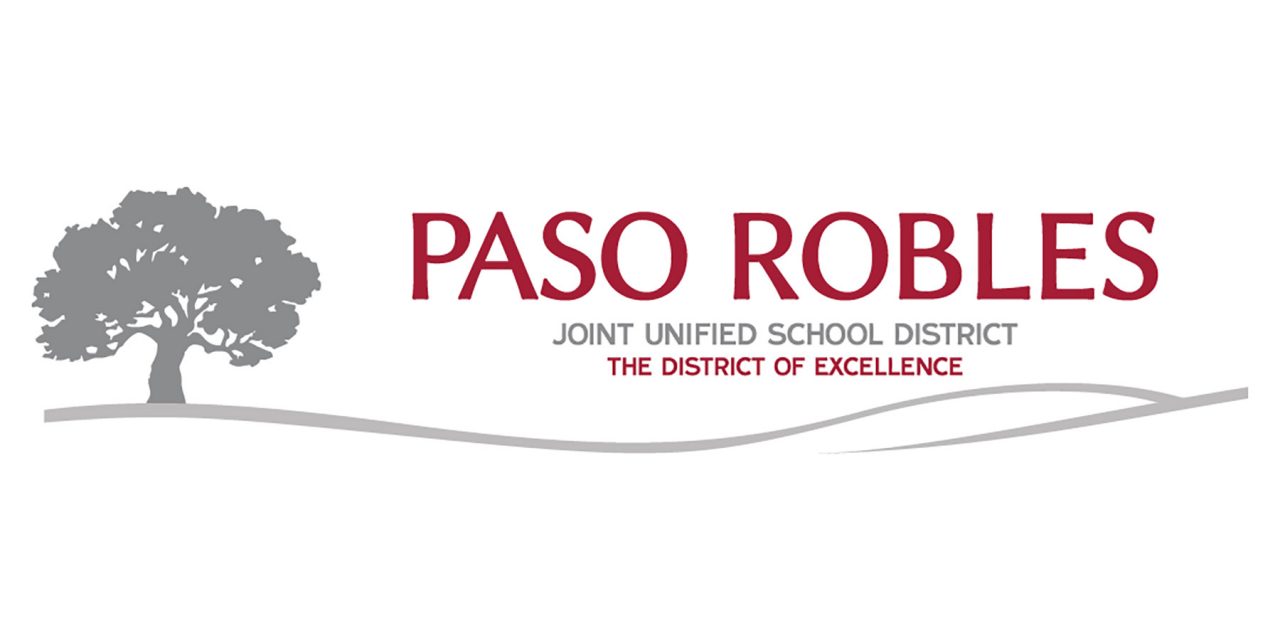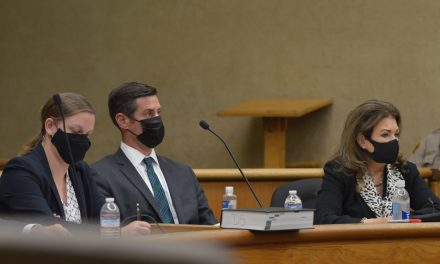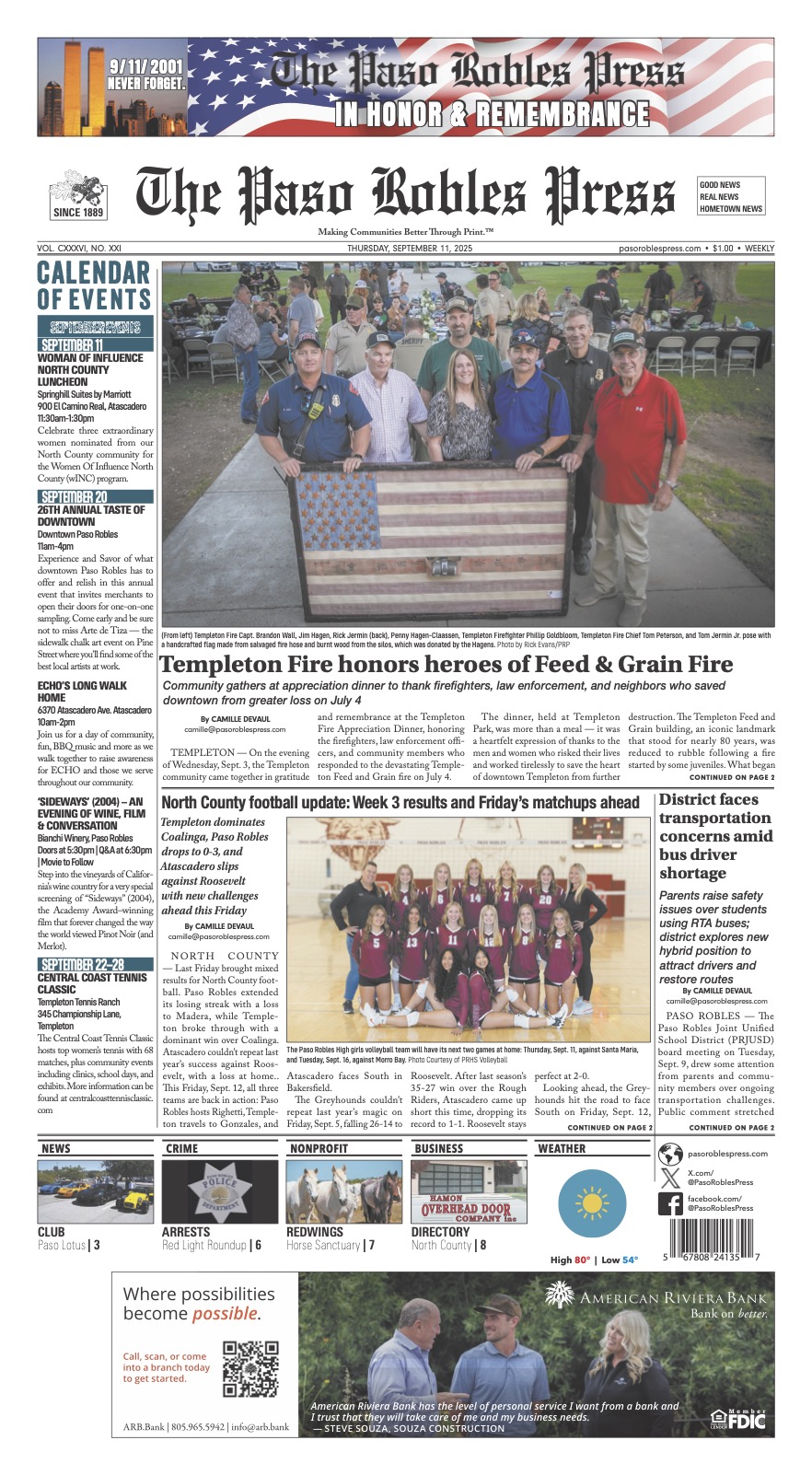District approves expenses needed for distance and hybrid learning plans
PASO ROBLES — Paso Robles Joint Unified School District School Board trustees approved “the plan for the safe reopening of schools” during a special meeting on Thursday, July 23.
The approved 96-page plan included three main options — in-person learning, a hybrid of distance and in-person learning, and distance learning. The goal, according to Superintendent Curt Dubost, has been returning to in-person learning, if allowed. But it’s not. The decision was taken out of the District’s hands by Gov. Gavin Newsom on July 17.
The resolution for the safe reopening of schools was modified to include the District looking into a waiver that would allow for in-person learning for elementary school students, Kindergarten to fifth grade. Trustees approved the District’s plan with a 6-1 vote, Chris Baush voted no.
Newsom directed any district in a county on the state’s watchlist to begin the school year with distance learning. A county has to be off the watchlist for 14 consecutive days before it can provide hybrid or in-person learning.
San Luis Obispo County has been on the list for a couple of weeks and will likely be on the list when PRJUSD starts the school year on Aug. 20.
Schools in the state were closed in March and finished the 2019-20 school year with distance learning due to the COVID-19 pandemic and subsequent directives from the governor and state and county health officials.
PRJUSD is going to start the year with distance learning and move to hybrid and then in-person learning when permitted. Dubost said they could bounce between options depending on what happens with the COVID-19 pandemic based on recommendations from state and county health officials.
The District’s plan also includes homeschooling and independent learning opportunities for parents to consider.
District staff ensured trustees that distance learning would be significantly enhanced from what was used to end the school year. Attendance will be taken. Students will receive letter grades based on performance.
The state’s minimum daily instructional minutes requirement is also back — 180 minutes for Kindergarten, 230 minutes for grades 1 through 3, and 240 minutes for grades 4 through 12.
Schools must develop procedures for re-engaging students absent from distance learning for more than three school days in a school week.
Paso Robles teachers were in step with the District’s plan as well. A letter of support from Jim Lynett, executive director of the Paso Robles Public Educators, written on behalf of the teachers union, was read.
The results of a PRJUSD teacher five-question survey was also made public. Teachers in each question overwhelmingly supported returning to in-person and or hybrid learning.
Trustees also approved expenditures that will improve technology at school sites and put Chromebooks in every teachers’ and students’ hands. The one-time cost for the Chromebooks was $552,000 and was approved 6-1.
Trustees approved increasing bandwidth to support live streaming of classes and upgrading the District’s internet connection to 10 Gigabits per second at a monthly cost of $2,000 and $1,000. They approved one-time charges to purchase a new firewall for $67,560 and a new internet filter for $17,875. All four votes were 6-1 with Bausch voting no each time.
The approved expenditures for upgrades to bandwidth and Chromebooks were not part of the District’s 2020-21 budget. They are expected to be covered by “Learning Loss Mitigation Funds,” according to PRJUSD Chief Business Officer Brad Pawlowski. These would also need to be in place if the District were opening with hybrid learning.
According to the California Department of Education, the Learning Loss Mitigation Funding (LLMF), authorized by the 2020–21 state budget package, appropriates $5,334,997,000 from three different funding sources to be allocated to local educational agencies (LEAs) to support transitional Kindergarten through 12th-grade pupil academic achievement and mitigate learning loss related to COVID-19 school closures.
LLMF has not been allocated to schools yet, and this concerned Bausch. LLMF is one-time money, and Bausch questioned how the District was going to pay for the ongoing monthly expenses that were approved.
Pawlowski explained that the San Luis Obispo County Office of Education approved the expenses. He would only bring these forward if he were confident the District was going to receive money from LLMF.















